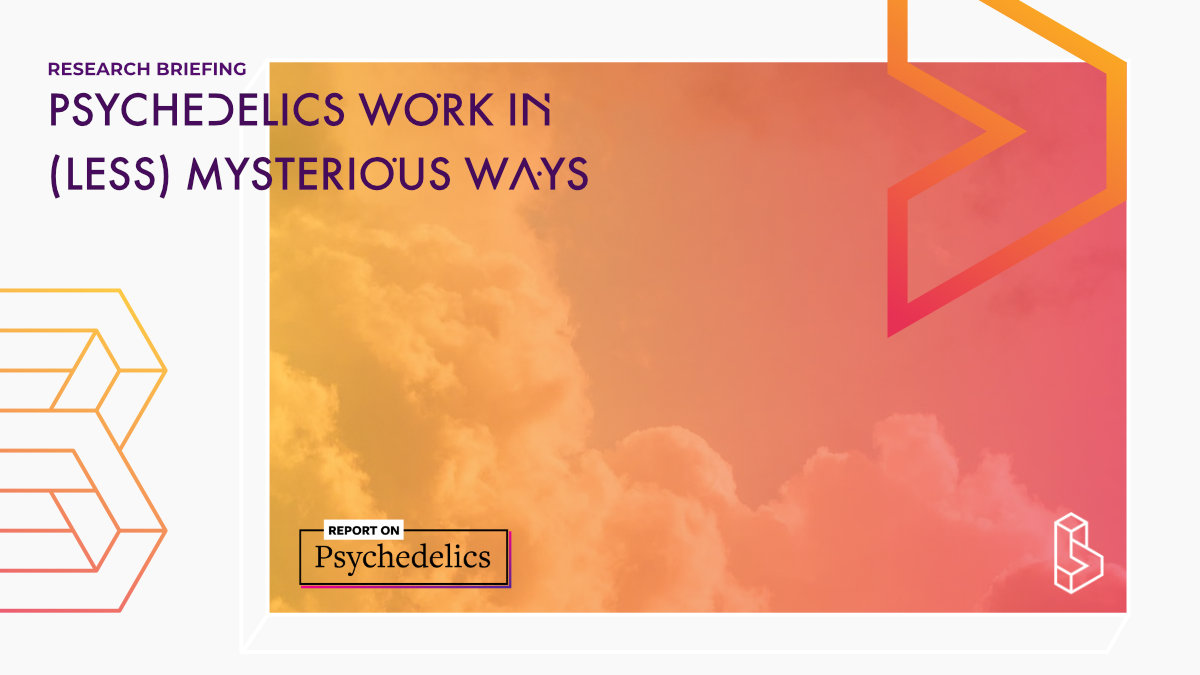This research briefing is co-published with the excellent Report on Psychedelics.
March 31st 2021
In The Research Briefing:
- Positive interpersonal experience during a retreat
- What predicts your response to MDMA
- LSD and your autonomic nervous system
SETTING
Posititive interpersonal experiences during psychedelic ceremonies
Nearly all modern clinical studies have been done in a very similar setting. The participant takes a capsule of psilocybin, lays down on a couch, and journeys with their eyes closed. There is little to no interaction with staff, and there are no others around them also going through the same experience.
But that is not how most psychedelic experiences go. The setting for psychedelics use is usually very social. That is what a large survey study with 886 participants investigated. The study validated the Communitas Scale (COMS) and showed that parts of the community experience predicted positive psychological outcomes. A psychedelic retreat could offer a sense of belongingness that last.
What lessons can we take to our next retreat?
- Rapport, getting to know and trust the people around you, predicted the level of emotional support someone experienced during the retreat.
- And the more emotional support someone experienced, the more they felt connected during the retreat.
- Communitas predicted psychological wellbeing and social connectedness several weeks after the retreat.
This study is the first to develop this conceptual model and bring more quantitative analysis to the naturalistic psychedelic experience.
PSYCHOLOGY & PHYSIOLOGY
MDMA plasma concentrations predict the acute effects
No two people are the same. Eric may stay up the whole night if he drinks a cup of coffee after 5pm. Laura, on the other hand, is able to drink a double espresso after dinner and fall asleep without issue. A pooled-analysis study of 194 healthy participants investigated the differences in physiological and psychological measures that predicted and were experienced on a high (125mg) dose of MDMA.
The psychological measures were the Visual Analog Scales (VASs; e.g. 0-100 on ‘drug liking’) and 5D-ASC (altered states of consciousness scale). The physiological measures included blood pressure, body temperature, and heart rate. Bodyweight was a significant predictor of the intensity of the experience. But after correcting for that, the study didn’t find significant differences between sexes.
What other things did this pooled-analysis find?
- The higher activity of the CYP2D6 enzyme (which are coded for by genes, more or less active in different people) predicted lower MDMA plasma concentrations.
- Plasma concentrations of MDMA (how much can be detected in your blood) was the strongest predictor of the intensity of the experience
- If you scored higher on Openness to Experience, you were more likely to score higher on Closeness and Oceanic Boundlessness during the experience
The data from this study could inform future trials and therapists on the factors that can influence how someone will experience MDMA. Next to bodyweight and psychological factors, the CYP2D6 gene expression could possibly also be measured in the future.
LSD
Learning more about LSD below the neck
Many studies have been done on the effect of LSD on our psychology. But fewer have looked at what 100 μg does to our autonomic nervous system. Sebastian Olbrich, Katrin Preller and Franz Vollenweider studied 17 participants in a double-blind, placebo-controlled study to find out more.
LSD predominantly increased the sympathetic activity, the activating or fight-or-flight system. An antagonist (vs agonist which LSD is) of the serotonin 2A receptors (where LSD binds to), named ketanserin increased the parasympathetic influence. Thus antagonizing the effects of LSD on the autonomic nervous system completely.
The details you want to know
- The psychedelic (subjective) effects of LSD were positively correlated with the sympathetic activity, and negatively with parasympathetic activity (the rest-and-digest system).
- LSD raised the heartrate of participants by 10 beats per minute on average. Ketanserin on the other hand slightly (but not significantly) lowered the heartrate
- Finally, this study suggests that the baseline sympathetic activity of a person may predict part of the response to treatment with LSD, as has been shown with SSRIs for instance.
Inside our brains, ketanserin is able to block out the effects of LSD, and thus being able to prevent or very much lower the subjective experience. This study shows that through activation of the parasympathetic system, a similar process also happens in the rest of our body.
Research Report Readout
Can psychedelics such as psilocybin lead to positive habits? This review paper argues that psychedelics can help augment prior commitments and help integrate these. The combination with CBT and ACT, two modern forms of talk therapy are also highlighted.
A novel study finds that ketamine may be useful for postpartum depression. The double-blind, randomized trail found lower depression scores (EPDS) for the group that received a combination of ketamine and nesdonal versus nesdonal alone.
Become more conscientiouss, and less neurotic with microdosing. That is what a small with 24 participants (at the final date) found. The study was done with experienced (having microdosed multiple times before) microdosers.
Become a psychedelic insider
Get a Pro Membership to enjoy these benefits & support Blossom📈 full reports on Topics & Compounds
🧵 full summary reviews of research papers
🚀 full access to new articles
See Memberships
